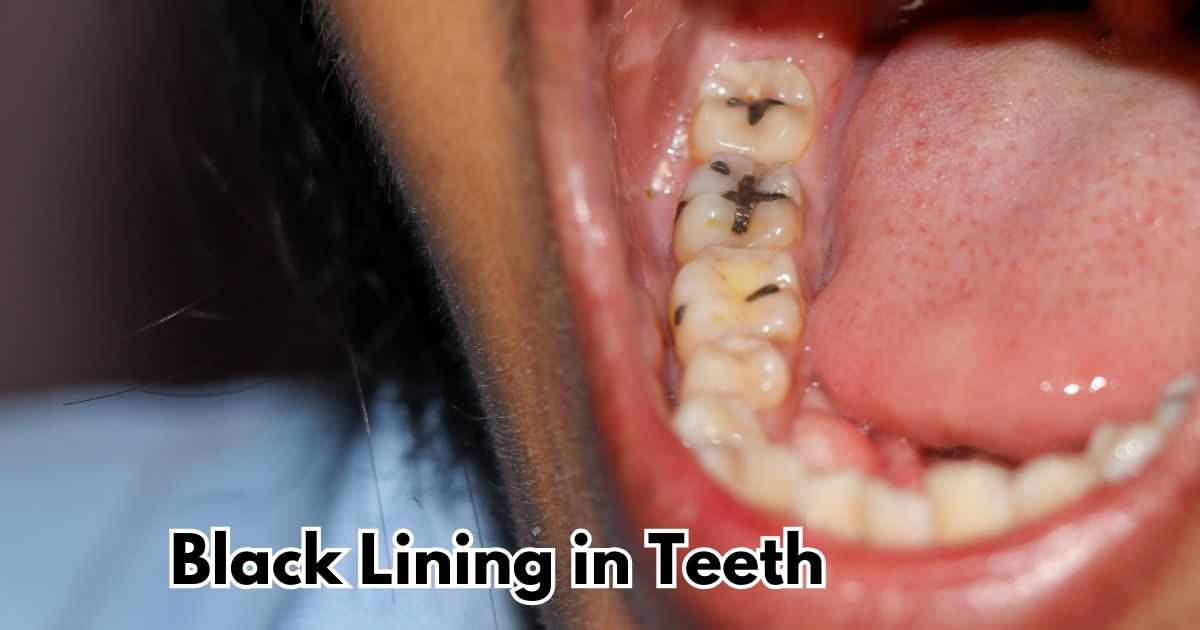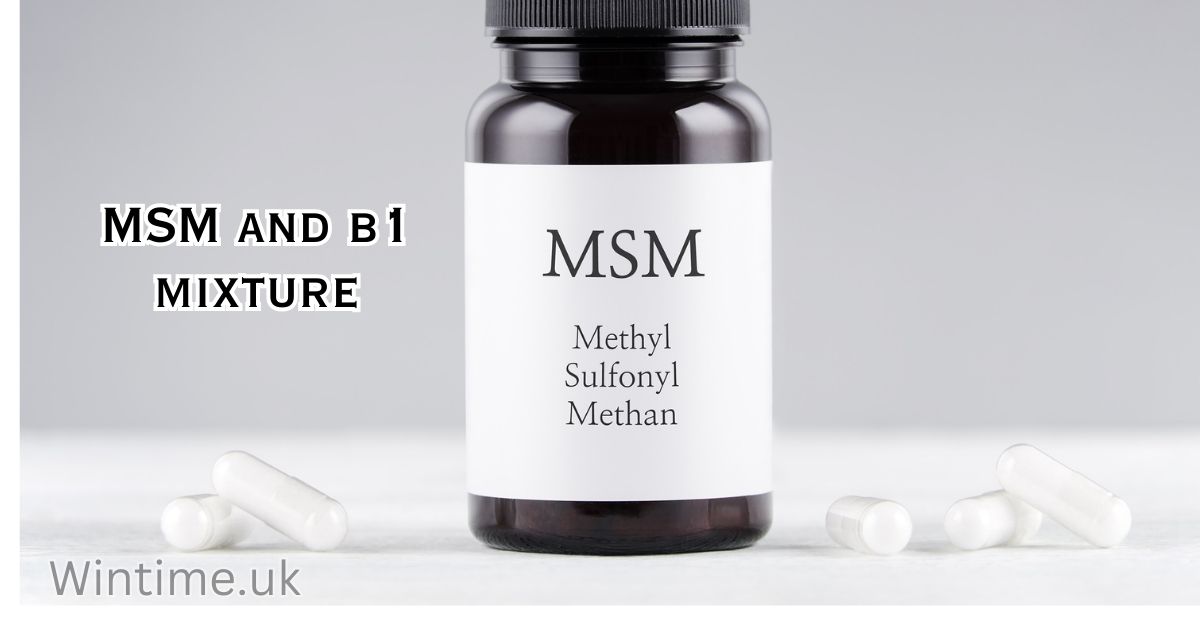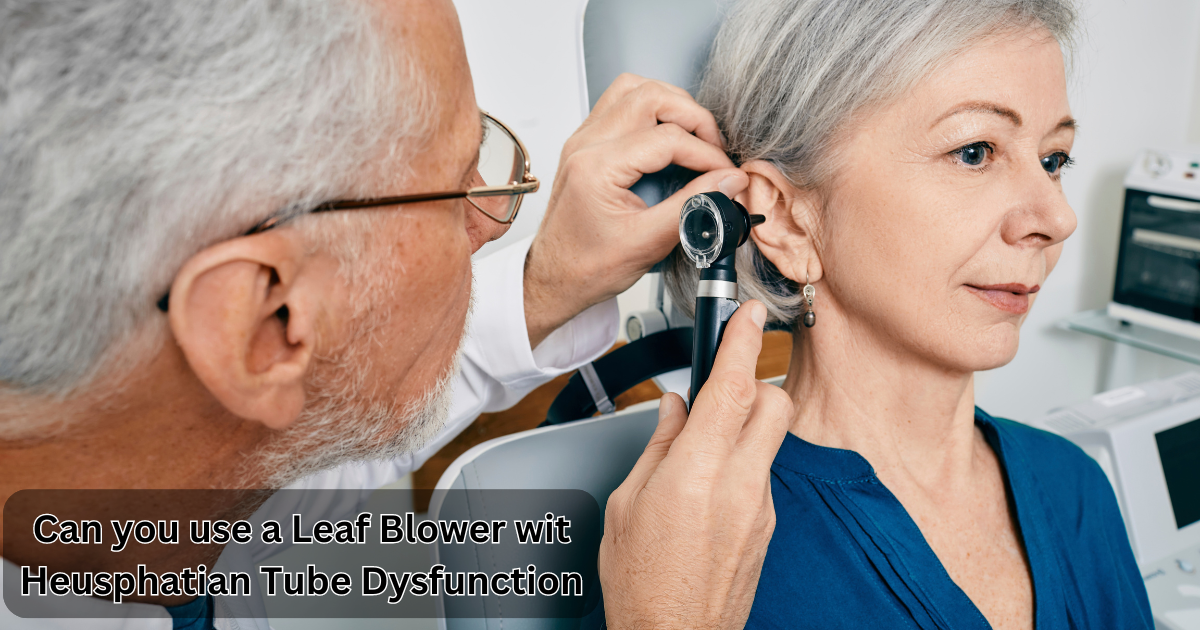Black lining in teeth can be an unsettling sight, often signaling underlying dental or health issues. This dark discoloration may appear as thin lines or streaks along the edges of teeth, which can be both aesthetically displeasing and a cause for concern. Understanding the causes of black lining in teeth is essential for proper diagnosis and treatment. This article explores various factors contributing to black lining, offering insights into prevention and management strategies.
Dental Plaque and Tartar
Formation of Plaque and Tartar
Dental plaque is a sticky, colorless film of bacteria that forms on teeth and gums. If not removed through regular brushing and flossing, plaque can harden into tartar, also known as calculus. Tartar is a yellow or brown mineral deposit that is firmly attached to the teeth. As it accumulates, it can contribute to the formation of black lining along the gum line or between teeth. Plaque and tartar buildup is often more pronounced in areas that are difficult to clean, such as between teeth and along the gum line. The dark color of tartar, combined with the accumulation of pigment from foods and beverages, can result in visible black lines.
Impact on Tooth Appearance
The black lining caused by tartar and plaque can be more than just a cosmetic issue. It may indicate a lack of effective oral hygiene, leading to more severe dental problems, including gum disease and tooth decay. Tartar buildup creates rough surfaces on teeth that can attract more plaque and food particles, exacerbating the discoloration. Regular dental cleanings are essential to remove tartar and prevent the progression of black lining. By addressing plaque and tartar early, individuals can maintain a healthier smile and avoid more serious dental issues.
Tooth Decay
Understanding Tooth Decay
Tooth decay, also known as dental caries, is a process where the enamel of the tooth is eroded due to the presence of acid-producing bacteria. These bacteria feed on sugars and carbohydrates, producing acids that dissolve the tooth’s mineral structure. As decay progresses, it creates cavities and can lead to the formation of dark lines or spots on the teeth. Initially, tooth decay may not be visible, but as the damage advances, it can manifest as black or brown discoloration along the tooth surface.
Connection to Black Lining
Black lining associated with tooth decay often appears as dark streaks or spots near the edges of teeth or within cavities. This discoloration is due to the breakdown of tooth enamel and the infiltration of pigments from foods and beverages into the decayed areas. If tooth decay is not treated promptly, it can lead to more severe dental issues, including tooth loss. Regular dental check-ups and prompt treatment of cavities are crucial for preventing and managing black lining caused by decay.
Staining from Foods and Beverages
Common Staining Foods and Drinks
Certain foods and beverages are notorious for causing staining on teeth. Items like coffee, tea, red wine, and dark-colored berries contain compounds known as chromogens, which can adhere to tooth enamel and cause discoloration. The acidity in these substances can also weaken enamel, making it more susceptible to staining. Over time, frequent consumption of these staining agents can lead to the development of black lines or patches on teeth.
How Stains Affect Tooth Color
Stains from foods and beverages can penetrate the outer layer of enamel, causing a gradual darkening of the teeth. The black lining may become more pronounced if oral hygiene is not maintained, as staining agents can accumulate on the teeth. While regular brushing and professional cleanings can help minimize the impact of stains, it is essential to be mindful of the consumption of highly pigmented foods and drinks to prevent severe discoloration. Additionally, whitening treatments can address existing stains and restore a brighter, more uniform tooth color.
Medications and Supplements
Medications That Cause Discoloration
Certain medications can cause changes in tooth color as a side effect. For example, antibiotics like tetracycline can cause intrinsic staining if taken during tooth development. Additionally, some antihypertensives and antipsychotics can contribute to tooth discoloration. These medications may lead to the appearance of black lines or spots on teeth, particularly if they affect the oral environment or contribute to reduced salivation.
Impact of Supplements
Supplements, particularly those containing iron, can also lead to black lining on teeth. Iron supplements can cause staining due to their dark color and tendency to interact with tooth enamel. This can result in unsightly black or brown lines on the teeth. To mitigate the risk of staining from supplements, it is advisable to follow dosage instructions carefully and consult with a healthcare professional about alternative options or preventive measures.
Poor Oral Hygiene
Role of Hygiene in Tooth Health
Maintaining good oral hygiene is crucial for preventing a range of dental issues, including black lining on teeth. Poor oral hygiene can lead to the accumulation of plaque and tartar, which contribute to tooth discoloration. Inadequate brushing, flossing, and neglecting regular dental cleanings can exacerbate the problem, allowing black lines to develop. Additionally, poor hygiene practices can lead to gum disease and other complications that further impact tooth appearance.
Consequences for Tooth Appearance
When oral hygiene is not properly maintained, the buildup of plaque and tartar can become more severe, leading to noticeable black lines on teeth. These lines are not only a cosmetic concern but also an indication of potential underlying dental issues. Addressing poor oral hygiene involves establishing a consistent routine of brushing, flossing, and professional cleanings to prevent the development of black lining and maintain overall dental health.
Genetics and Inherited Conditions
Genetic Factors
Genetics can play a significant role in the predisposition to tooth discoloration. Some individuals may be genetically predisposed to conditions that affect the color and appearance of their teeth. For example, certain genetic disorders can impact enamel development, leading to variations in tooth color and the potential for black lining. Genetic factors can influence how teeth respond to staining and decay, making it essential to consider family history when addressing dental discoloration.
Inherited Dental Conditions
Inherited dental conditions, such as dental fluorosis, can also contribute to black lining on teeth. Dental fluorosis occurs due to excessive fluoride exposure during tooth development and can result in mottled or discolored enamel. While fluorosis typically causes white spots or streaks, severe cases can present as dark lines or patches. Understanding inherited conditions is crucial for managing and treating black lining effectively, as some factors may be beyond an individual’s control.
Dental Restorations and Fillings
Types of Dental Restorations
Dental restorations, including fillings, crowns, and veneers, are commonly used to repair damaged or decayed teeth. These restorations are made from various materials, such as composite resins, amalgam, and porcelain. While restorations are designed to blend with natural tooth color, certain materials can sometimes cause black lines or discoloration over time. For instance, amalgam fillings can develop a dark appearance that contrasts with natural teeth, leading to visible black lines along the edges of the restoration.
Impact on Tooth Color
The impact of dental restorations on tooth color can vary depending on the material used and the condition of the surrounding teeth. Over time, restorations may become stained or discolored due to exposure to food, beverages, and oral hygiene products. Additionally, the margins of restorations can become darkened if plaque and tartar accumulate. Regular dental check-ups and maintenance are essential for ensuring that restorations remain aesthetically pleasing and do not contribute to black lining.
Also Read: Shannon Swanick TPO
Fluorosis
Understanding Fluorosis
Dental fluorosis is a condition caused by excessive fluoride exposure during the development of teeth, typically in childhood. Fluorosis results in changes to the appearance of tooth enamel, ranging from mild white spots to more severe discoloration. In severe cases, fluorosis can cause dark lines or patches on the teeth. The condition occurs when fluoride disrupts the normal formation of enamel, leading to the formation of irregularities in color and texture.
Connection to Black Lining
Fluorosis can cause black lining or mottling on teeth, particularly in more severe cases. The dark lines or spots result from the uneven distribution of fluoride during enamel development, leading to areas of discoloration. While mild fluorosis may only cause white spots, more severe forms can present as black or brown lines. Prevention of fluorosis involves monitoring fluoride intake during childhood and using fluoride products as recommended by dental professionals.
Environmental Factors
Influence of Environmental Conditions
Environmental factors can impact tooth color and contribute to the development of black lining. Exposure to certain chemicals, pollutants, or substances can affect the appearance of teeth. For example, frequent contact with industrial chemicals or environmental pollutants may lead to discoloration or black lining on teeth. Additionally, poor water quality with high levels of certain minerals can contribute to tooth staining and darkening.
Effects on Tooth Color
The effects of environmental factors on tooth color can vary depending on the type and duration of exposure. Chemicals and pollutants can interact with tooth enamel, causing staining or discoloration over time. To mitigate the impact of environmental factors, it is important to maintain good oral hygiene, avoid excessive exposure to harmful substances, and seek regular dental check-ups to address any potential issues related to environmental factors.
Acidic Foods and Drinks
Effects of Acidity on Teeth
Acidic foods and drinks, such as citrus fruits, sodas, and vinegar, can erode tooth enamel over time. The acids in these substances weaken the enamel, making it more susceptible to staining and discoloration. As the enamel wears away, the underlying dentin, which is naturally darker, can become more visible, contributing to the appearance of black lines or patches. Acidic erosion can also create rough surfaces on teeth, increasing the likelihood of plaque buildup and further discoloration.
Resulting Black Lining
Black lining resulting from acidic foods and drinks often appears as dark streaks or patches along the edges of teeth. The erosion of enamel exposes the darker dentin underneath, which can become stained more easily. To prevent black lining caused by acid erosion, it is important to limit the consumption of acidic foods and drinks, practice good oral hygiene, and use fluoride products to strengthen enamel. Rinsing with water or using a mouthwash after consuming acidic substances can also help minimize damage.
Smoking and Tobacco Use
Impact of Tobacco on Dental Health
Smoking and tobacco use have well-documented negative effects on dental health. Tobacco products contain tar and nicotine, which can lead to the formation of black or brown stains on teeth. These stains are particularly noticeable along the gum line and between teeth, where tobacco residue tends to accumulate. Additionally, smoking can contribute to gum disease and oral cancer, further impacting the appearance and health of teeth.
Black Lining as a Result of Tobacco Use
The black lining caused by smoking and tobacco use is often a result of tar and other substances adhering to the tooth surface. This discoloration can become more pronounced with continued use and can be challenging to remove with regular brushing alone. To address black lining from tobacco use, quitting smoking is the most effective solution. Professional dental cleanings and whitening treatments can help improve the appearance of teeth and remove existing stains.
Health Conditions and Diseases
Systemic Health Issues
Certain systemic health conditions can affect tooth color and contribute to black lining. For example, conditions such as diabetes, liver disease, and certain autoimmune disorders can impact oral health and lead to discoloration. Systemic health issues may cause changes in saliva production, tooth enamel quality, or overall oral environment, resulting in black lines or spots on teeth.
Specific Conditions Causing Black Lining
Specific health conditions, such as melasma or Addison’s disease, can also cause black lining or discoloration on teeth. Melasma, a condition characterized by dark patches on the skin, can sometimes extend to the oral mucosa, affecting tooth color. Addison’s disease, which affects hormone production, may lead to changes in oral pigmentation. Understanding the connection between health conditions and black lining is crucial for effective diagnosis and treatment.
Improper Dental Treatments
Issues with Dental Procedures
Improper dental treatments can lead to black lining on teeth, particularly if procedures are not performed correctly or if materials used are of low quality. For example, poorly placed fillings or crowns can result in gaps where plaque and tartar can accumulate, leading to discoloration. Additionally, the use of certain dental materials may cause dark lines around restorations if they are not matched to the natural tooth color.
Impact on Tooth Color
The impact of improper dental treatments on tooth color can vary depending on the type of procedure and materials used. Black lines or discoloration may develop around restorations or fillings if they do not adhere properly or if they become stained over time. To prevent issues related to dental treatments, it is important to choose a reputable dentist and ensure that all procedures are performed using high-quality materials and techniques.
Aging and Wear
Effects of Aging on Teeth
As people age, their teeth naturally undergo changes that can affect their appearance. The enamel layer becomes thinner with age, and the dentin underneath becomes more visible. This can lead to a gradual darkening of the teeth and the development of black lines or patches. Additionally, wear and tear from chewing and exposure to various substances can contribute to changes in tooth color.
Wear and Tear Impact
Wear and tear on teeth can exacerbate the appearance of black lining. The cumulative effect of daily use, combined with factors such as poor oral hygiene or dietary choices, can lead to visible discoloration. Regular dental check-ups and professional cleanings can help manage the effects of aging and wear, ensuring that teeth remain as healthy and aesthetically pleasing as possible.
Tooth Sensitivity and Enamel Erosion
Understanding Tooth Sensitivity
Tooth sensitivity occurs when the enamel that protects the teeth becomes worn or damaged, exposing the sensitive dentin underneath. This condition can be caused by various factors, including abrasive brushing, acidic foods, or tooth grinding. Sensitivity itself may not cause black lining, but it often accompanies enamel erosion, which can contribute to discoloration.
Relation to Black Lining
Enamel erosion, a common result of tooth sensitivity, can lead to the appearance of black lines on teeth. As the enamel wears away, the underlying dentin becomes more exposed and susceptible to staining. To manage tooth sensitivity and prevent black lining, it is important to use a soft-bristled toothbrush, avoid abrasive toothpaste, and address any habits that contribute to enamel erosion.
Impact of Oral Habits
Common Oral Habits
Certain oral habits can affect tooth color and contribute to the development of black lining. For example, habitual nibbling on pens or using teeth as tools can cause wear and discoloration. Additionally, frequent consumption of sugary or acidic foods can exacerbate staining and black lining. Addressing these habits is crucial for maintaining good oral health and preventing discoloration.
Black Lining from Habits
Black lining caused by oral habits often results from the combined effects of wear, staining, and enamel erosion. Habits such as nail-biting or chewing on hard objects can lead to physical damage and discoloration of teeth. To minimize the impact of oral habits, it is important to adopt healthier practices and seek guidance from a dental professional if necessary.
Diagnosis and Professional Evaluation
How Dentists Diagnose Black Lining
Diagnosing black lining on teeth involves a thorough examination by a dentist. Dentists use visual inspection, X-rays, and other diagnostic tools to assess the extent of discoloration and identify underlying causes. During the examination, the dentist will evaluate the condition of the teeth, gums, and surrounding tissues to determine the appropriate course of action.
Importance of Professional Evaluation
A professional evaluation is essential for accurately diagnosing the cause of black lining and developing an effective treatment plan. Dentists can provide insights into the underlying issues contributing to discoloration and recommend appropriate interventions, such as professional cleanings, restorative treatments, or lifestyle changes. Regular dental check-ups are crucial for maintaining oral health and addressing any concerns related to black lining.
Treatment and Management
Options for Treating Black Lining
Treatment for black lining on teeth depends on the underlying cause. Options may include professional dental cleanings to remove plaque and tartar, whitening treatments to address staining, and restorative procedures to repair damaged teeth. In cases where black lining is due to decay or structural issues, dental fillings, crowns, or other restorative treatments may be necessary.
Managing Underlying Causes
Managing the underlying causes of black lining is crucial for effective treatment and prevention. This may involve improving oral hygiene practices, addressing dietary habits, and managing any systemic health conditions. Regular dental visits and adherence to recommended treatments can help prevent the recurrence of black lining and maintain overall dental health.
Prevention Strategies
Preventing Black Lining in Teeth
Preventing black lining involves a combination of good oral hygiene, healthy dietary choices, and regular dental care. Brushing and flossing daily, using fluoride products, and avoiding excessive consumption of staining or acidic foods can help reduce the risk of black lining. Additionally, quitting smoking and managing health conditions are important for maintaining a healthy, vibrant smile.
Lifestyle Changes for Prevention
Lifestyle changes can significantly impact the prevention of black lining on teeth. Adopting habits such as rinsing with water after consuming staining substances, avoiding excessive use of tobacco products, and scheduling regular dental check-ups can help maintain tooth color and prevent discoloration. By making these changes, individuals can enjoy better oral health and a more attractive smile.
Conclusion
Understanding the causes of black lining in teeth is essential for effective diagnosis and treatment. From dental plaque and tartar to systemic health conditions, various factors can contribute to the development of black lines or spots on teeth. By addressing these causes through proper oral hygiene, professional dental care, and lifestyle changes, individuals can prevent and manage black lining effectively. Regular dental check-ups and a proactive approach to oral health are key to maintaining a healthy, vibrant smile.










